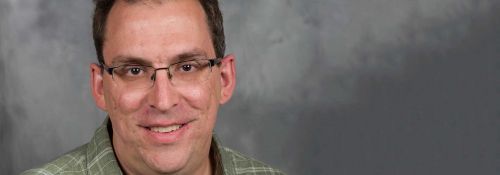
Hillsdale College Physicist Contributes To Landmark Astrophysics Research
International project involving assistant professor Ryan Lang makes historic gravitational wave detection
Hillsdale, Mich. – The LIGO Scientific Collaboration and the Virgo Collaboration announced today that the project’s Advanced Virgo detector in Italy had detected its first gravitational wave event in conjunction with the Advanced LIGO (Laser Interferometer Gravitational-wave Observatory) detectors, thanks in part to the work of Hillsdale College’s own assistant professor of physics Ryan Lang.
“This is an exciting day for gravitational-wave astronomy,” said Dr. Lang. “Adding Virgo to the worldwide gravitational-wave detector network will greatly enhance the science we can do.”
The observation, labeled GW170814, took place on August 14, 2017, and is the fourth gravitational wave detection made by the Advanced LIGO instruments. It is the Advanced Virgo detector’s first since the instrument run by the Virgo Collaboration joined an observation run on August 1, 2017, alongside the two LIGO detectors, located in Washington and Louisiana.
“Black holes are dead remnants of the largest stars. When those stars die, there’s a massive explosion that leaves behind this strange thing called a black hole. The gravity of a black hole is so strong that nothing–not even light–can escape. Sometimes, two black holes end up orbiting each other and eventually colliding, creating an even larger black hole,” said Dr. Lang. “The detectors we use help physicists to listen and look for those kinds of collisions.”
The triple-instrument detection, the first of its kind, is significant for several reasons:
- The use of a third detector allowed researchers to more accurately localize the source of the gravitational wave event, making the possible source region ten times smaller than a dual-instrument detection.
- The detection provided an opportunity to test Einstein’s general theory of relativity further.
- As past detections have also shown, this gravitational wave emitted from the coalescence of two distinct black holes – a binary black hole merger.
Lang has been working on gravitational wave research for the LIGO project since August 2015. In January of this year, he and Hillsdale student Joshua Ramette presented their contributions to the project at a meeting of the American Physical Society (APS) in Washington, D.C. The main goal of the research Lang and the other scientists involved with LIGO are conducting is to better understand the formation of black holes and to test Einstein’s theory of relativity against alternate gravitational theories.
GW170814 will be discussed at a press conference in Europe on September 27 with a focus on the Italy-based detector’s role in the triple-instrument detection, and the paper detailing the research has been accepted by the journal “Physical Review Letters.” This announcement is the latest discovery in LIGO’s ongoing work to study gravitational waves and black holes. LIGO’s global coalition of scientists expects to continue releasing more findings from its groundbreaking physics and astrophysics research.
About LIGO Scientific Collaboration
LIGO is funded by the NSF, and operated by Caltech and MIT, which conceived and built the project. Financial support for the Advanced LIGO project was led by NSF with Germany (Max Planck Society), the U.K. (Science and Technology Facilities Council) and Australia (Australian Research Council) making significant commitments and contributions to the project. More than 1,200 scientists from around the world participate in the effort through the LIGO Scientific Collaboration, which includes the GEO Collaboration.
The Virgo collaboration consists of more than 280 physicists and engineers belonging to 20 different European research groups: six from Centre National de la Recherche Scientifique (CNRS) in France; eight from the Istituto Nazionale di Fisica Nucleare (INFN) in Italy; two in The Netherlands with Nikhef; the MTA Wigner RCP in Hungary; the POLGRAW group in Poland; Spain with the University of Valencia; and EGO, the laboratory hosting the Virgo detector near Pisa in Italy.